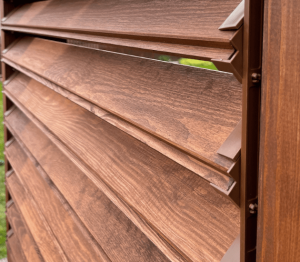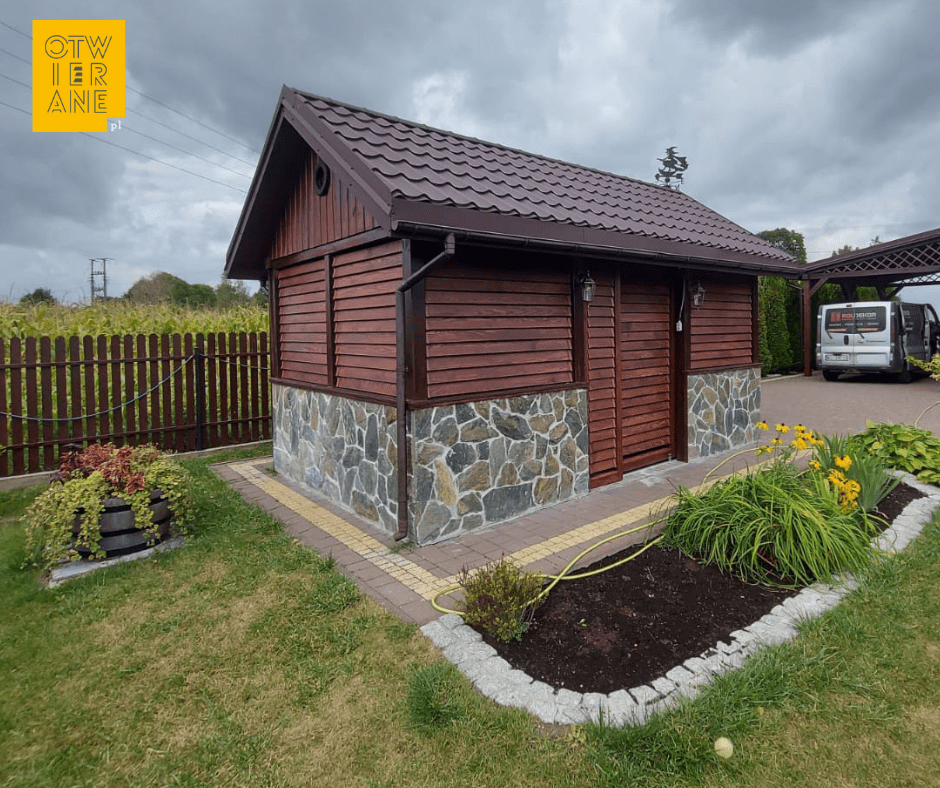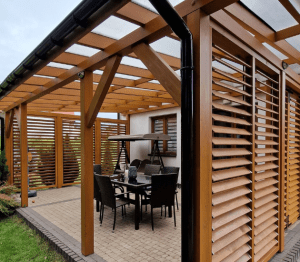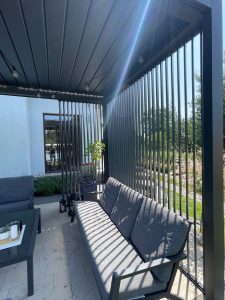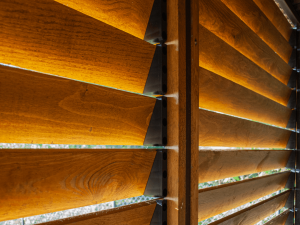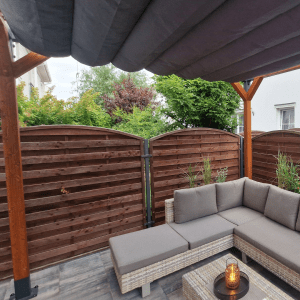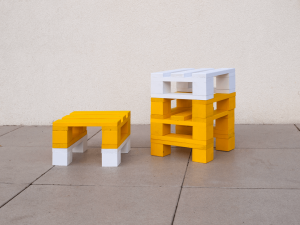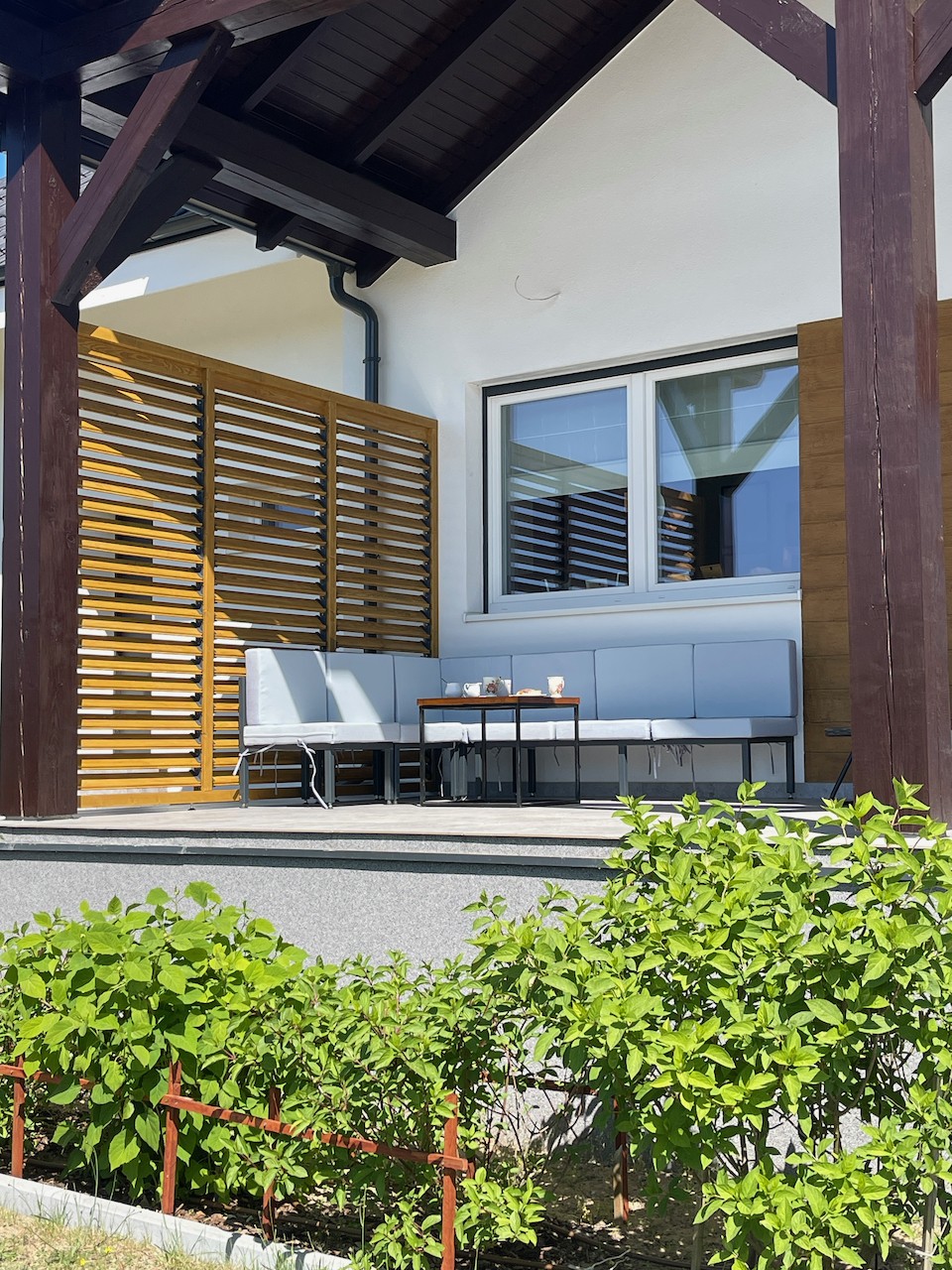
Built-in terrace or garden shed?
You already have a garden, but you could use a pleasant seating area. Would an enclosed terrace be better, or perhaps a garden shed?
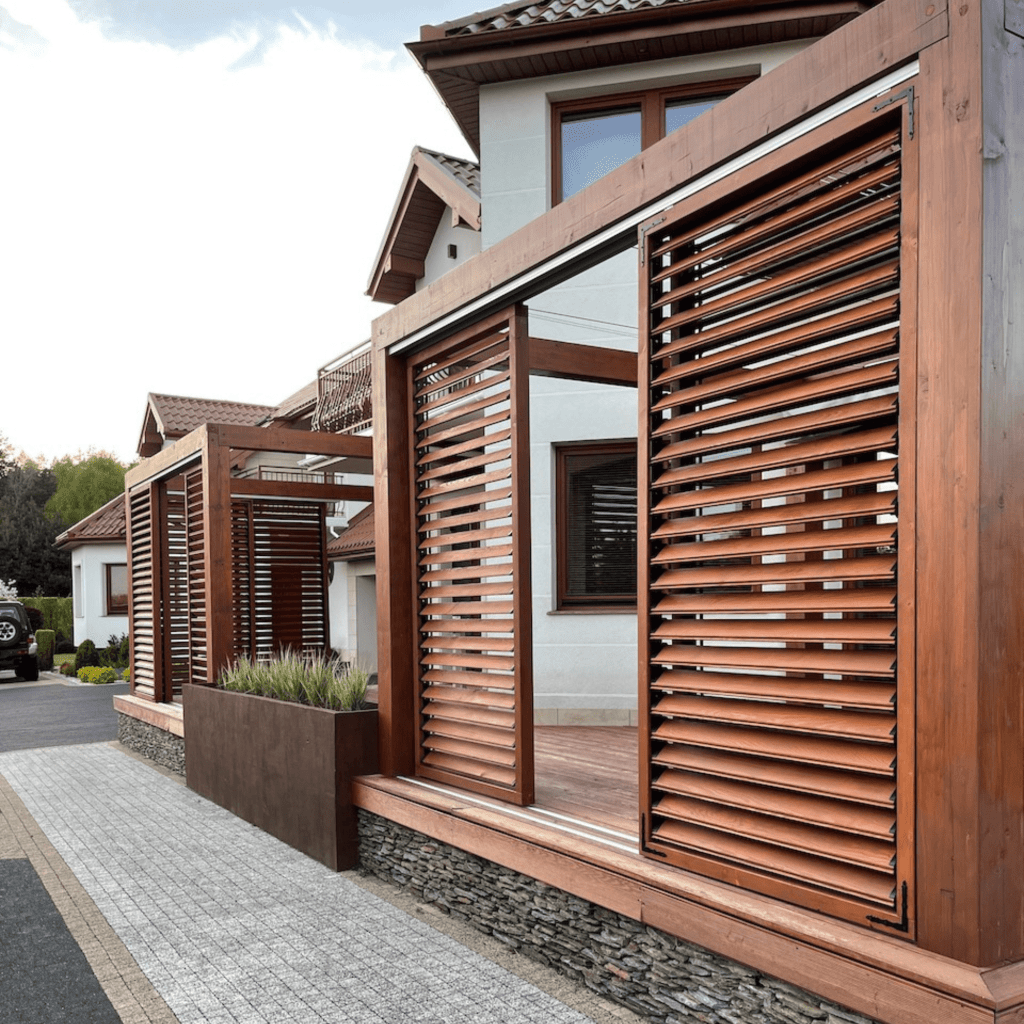
Both solutions have their advantages. If you plan to construction of a garden shed or you want to make better use of your Terrace, Think about their functions. Do you want a place that is typically relaxing? Or are you planning an outdoor kitchen and dining area, or do you need a barbecue area? Or do you want a functional space for children to play? The decision is yours.
If you decide to have a terrace built in:
- determine the degree of development - whether partial or mobile,
- choose the construction material - wood, plexiglass or perhaps metal,
- Consider roofing, and if so, what kind,
- think about furnishings,
- plan lighting and decoration.
If you are deciding on a garden shed:
- consider its size (up to 35 m2 you do not need planning permission),
- Identify its functions: tool house, leisure pavilion, outdoor dining area, play area,
- consider whether you want to build and design it yourself or use off-the-shelf components,
- determine the degree of development - whether partial or mobile,
- choose the construction material - wood, plexiglass or perhaps metal,
- Consider building a gazebo from ready-made elements,
- Consider roofing, and if so, what kind,
- think about furnishings,
- plan lighting and decoration,
- Think about planting it.
What are the advantages of having a built-in terrace?
The terrace is a natural extension of the house. One more 'room' that can be the new centre of life in your home in summer. Whatever you plan to do on the terrace, it's easy to take things out of the house and stow them away. If you approach the subject properly, you can create a functional space that allows you to relax outdoors. Whatever the weather conditions. Just the way you like it.
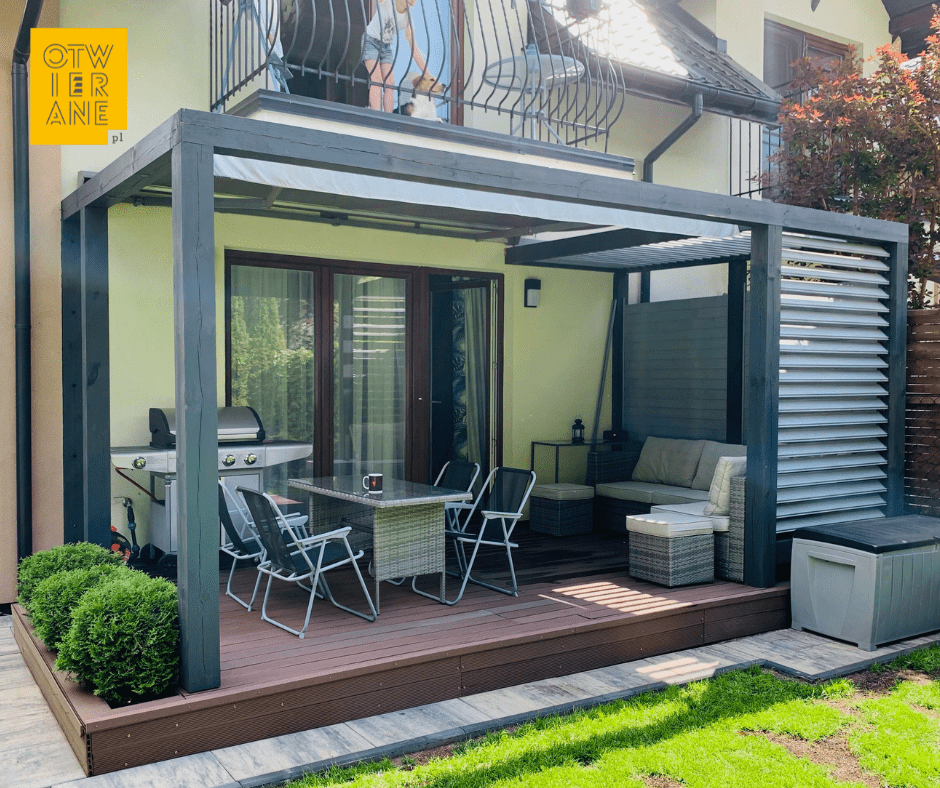
Most houses already have a pre-planned and designed terrace. Adapting it to your needs therefore does not necessarily require very large changes and extensive costs. You don't have to build everything from scratch. Sometimes just the right furniture and a little decoration is enough to create a welcoming and beautiful space.
You can easily build a terrace. Add walls, solid, openwork or louvre, if:
- you want to shield yourself from the prying eyes of your neighbours,
- you need protection from the wind and the sun,
- you wish to extend the use of your terrace during inclement weather,
- you dream of a green wall of climbing plants on your terrace,
- you need to create a comfortable frame for hanging a hammock, decorative plants or romantic lighting, for example.
You can cover the terrace with movable elements and get a space with many possibilities.
What are the advantages of having a garden shed?
A garden gazebo is a great choice if you have a large piece of garden. Not only will it provide a multifunctional space, but it will enhance the appeal of your garden. If you are planning a holiday gazebo, choose the nicest location in your garden. As long as this is possible, of course. A garden gazebo can have many great facets. For example, it can be:
- place of rest,
- outdoor dining area,
- barbecue area,
- decorative pavilion, providing support for beautiful plants,
- a playhouse for children,
- tool house,
- carport.
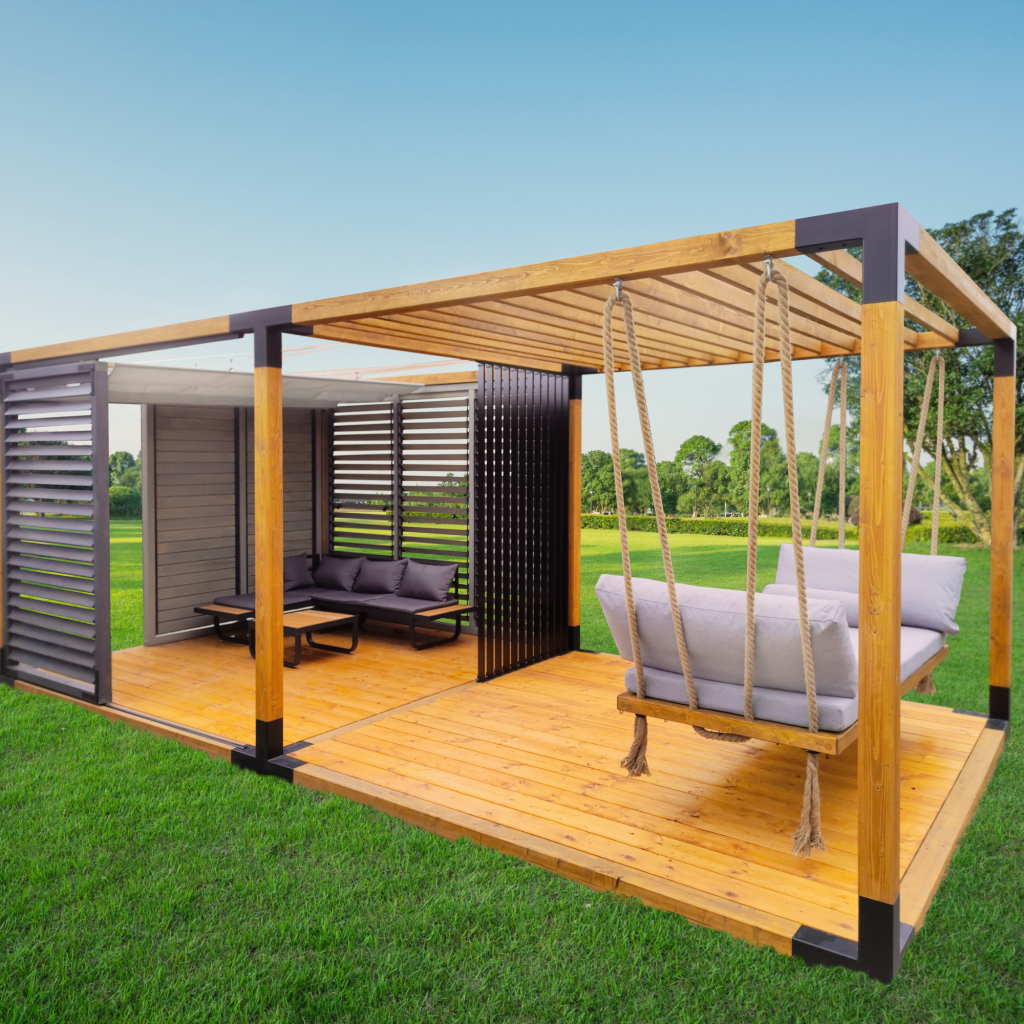
Some of these functions can be combined. A garden gazebo - unlike a terrace - is an overall project. You build the structure from scratch including site preparation and roofing. You can, of course, use ready-made designs or even prefabricated components. Or even buy a ready-made unit and simply place it in the most favourable location.
It is up to you to decide on the size, design and purpose of your garden shed. Your only limitations will be plot size and budget. And a possible willingness or unwillingness to obtain planning permission. However, this only applies to you if you plan to exceed 35 m2 of building area.
A garden gazebo can be openwork or built-in, depending on your needs and desires. You can combine the built-in with plants or opt for a completely movable pavilion that changes when you need it.
You can position your gazebo to make the most of the sunshine or shade. You decide its exposure and can influence whether the structure is warmer or cooler, more or less airy.
A garden gazebo also offers great possibilities when it comes to furnishing and decorating it. An outdoor suspended bed? Sure! Hammocks? Of course! Designer garden furniture? Of course! A fire pit, super-grill or outdoor summer kitchen with removable burners? There you go! The choice is yours.
Terrace cladding. What can you expect?
Remember that the development must be notified to the architectural and construction administration. For example, to the community where you have a plot of land. Include with the notification a declaration that the property is available for construction purposes and a preliminary design of the terrace development.
The limitation of the terrace is that it is completely dependent on the structure of the house. You cannot influence too much where it will be placed. More often than not, you are dealing with a certain existing condition and you have to make the most of it. You can't always influence the surface or the exposure of the terrace. What you can do, however, is add a canopy or built-in elements to it to help you achieve the desired effect. This is definitely worth considering, especially if you enjoy relaxing on your terrace and want to do so for as long as possible.
You will also have some limitations on the canopy. If the roof of your terrace is not a natural extension of the roof of your house, you may want to consider a movable canopy with roller or Roman blinds. They will certainly work well with little rainfall and scorching sun. It is worth thinking about.
If you're thinking of building in, consider choosing the type and colour of material. Or why not opt for walls of movable external blinds? Then you will have a say in when and to what extent you shield the terrace. Blinds can be metal, wood and composite.
The cost of the development depends on the area of the terrace and the material chosen.
Building and building a garden shed. What can you expect?
Remember that the development must be notified to the architectural and construction administration. For example, to the community where you have a plot of land. Include with the notification a declaration that the property is available for construction purposes and a preliminary design of the terrace development.
The limitation of the terrace is that it is completely dependent on the structure of the house. You cannot influence too much where it will be placed. More often than not, you are dealing with a certain existing condition and you have to make the most of it. You can't always influence the surface or the exposure of the terrace. What you can do, however, is add a canopy or built-in elements to it to help you achieve the desired effect. This is definitely worth considering, especially if you enjoy relaxing on your terrace and want to do so for as long as possible.
You will also have some limitations on the canopy. If the roof of your terrace is not a natural extension of the roof of your house, you may want to consider a movable canopy with roller or Roman blinds. They will certainly work well with little rainfall and scorching sun. It is worth thinking about.
If you're thinking of building in, consider choosing the type and colour of material. Or why not opt for walls of movable external blinds? Then you will have a say in when and to what extent you shield the terrace. Blinds can be metal, wood and composite.
The cost of the development depends on the area of the terrace and the material chosen.
If you are planning a garden shed larger than 35 m2, you will need to obtain formal planning permission. Are you building a gazebo not exceeding 35 m2 on a plot outside ROD areas? Notify the competent authority of your intention to build. You wait 21 days for a response. And here's where it gets interesting. You do not wait for approval. Simply, if you do not receive a refusal, you can start building. Are you building a garden shed on a ROD plot? You must notify the planned construction in writing to the board.
If you are going the whole hog and want to build more than one garden shed, be aware of the regulations. There can be a maximum of two gazebos of up to 35 m2 per 500 m2 plot.
Planning a garden shed with an outdoor kitchen, barbecue or fire pit? Make sure it is well protected against fire. A garden shed may not be covered by fire safety regulations, but the prudent always have insurance. Make sure that the lighting in your gazebo is suitable for outdoor facilities. If you don't have the option of bringing electricity to your gazebo, you can use solar lighting.
If you are building a garden shed from scratch, you need to prepare yourself for the fact that this is a major undertaking. It requires levelling the ground, sometimes even making a screed and a foundation. And all this even before you start the construction itself. Not everyone necessarily wants to do this kind of work. If you are put off by the idea of building a garden shed yourself from scratch, you can use ready-made solutions.
You can, of course, opt for a ready-made pavilion design. Then, unfortunately, you have little influence on its appearance and functionality. The best solutions on the market are flexible. So you can easily plan how you want the gazebo to look and what it should be used for. It's not a simple matter of buying a 'ready-made' one, but a choice. This way you don't have to compromise, you don't agonise over the design and you get the desired effect. Modular gazebos is then the best solution for you. A simple design that you can fill with the elements of your choice:
- solid and lamella partitions,
- walls in the form of movable blinds,
- sliding shutter doors,
- roofing,
- roof in the form of a Roman blind,
- wooden floor,
- suspended garden bed,
- and others.
Planning garden shed on a prefabricated system gives you the flexibility to furnish it, as well as its purpose. By the way, you have a simple structure, a reliable roof and good space for garden furniture and other amenities.

